Apple iPhone 4S: Thoroughly Reviewed
by Anand Lal Shimpi & Brian Klug on October 31, 2011 7:45 PM EST- Posted in
- Smartphones
- Apple
- Mobile
- iPhone
- iPhone 4S
History loves to repeat itself, and even Apple isn’t immune to the yearly cycle of rumor and release. Leading to each year’s iPhone refresh, excitement, rumors, and hype build to a fever pitch, features and designs are added into an increasingly unrealistic combination, and finally everyone is silenced at the device’s eventual unveiling.
Today we’re looking at Apple’s latest iPhone refresh, the iPhone 4S (henceforth just 4S).
The review has to start somewhere, and the path of least resistance is usually just exterior appearances - in this case the 4S is easy to go over. The 4S keeps the overall form factor and design of its predecessor, but to call it identical to the iPhone 4 isn’t entirely correct. Instead, the 4S borrows its stainless steel band break locations from the CDMA iPhone 4, which we talked about extensively when it finally released. The GSM/UMTS iPhone 4 previously had three notches, where the CDMA iPhone 4 and 4S have a total of four.
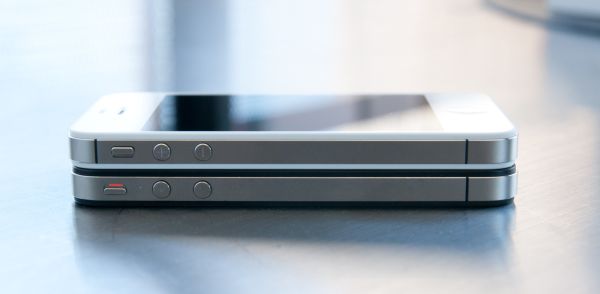
Top: iPhone 4S, Bottom: iPhone 4
The long and short of this change is that the notches have been moved around to accommodate a design with two cellular antennas. One is up at the very top, the other is at the very bottom - the two are the small U shaped portions. The result of this change is that the 4S has a very symmetrical design, as opposed to the GSM/UMTS 4’s asymmetric layout.
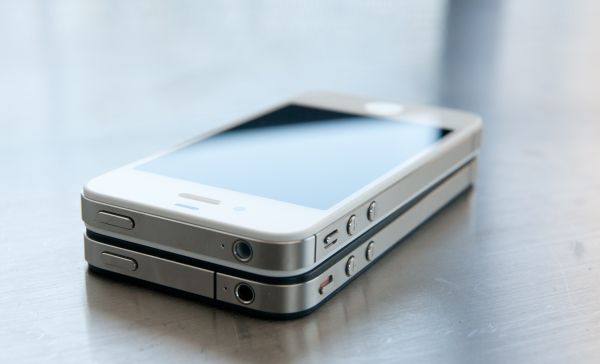 Top: iPhone 4S, Bottom: iPhone 4
Top: iPhone 4S, Bottom: iPhone 4
Just like the CDMA iPhone 4, the 4S also moves the vibrate/lock switch down the device just slightly to accommodate the new break for the top antenna band. This is the physical change that breaks compatibility with cases designed for the older GSM/UMTS iPhone 4. If you recall previously, however, Apple refreshed its bumpers with a new “Universal” line around the time of the CDMA iPhone 4 launch. At that time, case makers also followed suit with a larger vibrate/lock switch port. The result is that if you have a “universal” case created after the launch of the CDMA iPhone 4, you likely won’t need a new one for the 4S.
I say likely because some cases that cover the front of the 4S and are universal might not work as well owing to a small change in the placement of the 4S’ ambient light sensor. It’s going to be a case by case basis to determine which 4 cases that cover the front of the display work with the 4S.
The rest of the 4S exterior is superficially identical to its predecessor, which has become something of a point of contention for shoppers who like being able to identify themselves as owning a 4S, as opposed to a 4. There are, however, subtle differences you can leverage to tell the 4S from its two 4 brethren. The 4S includes the regulatory (FCC, recycling, European Conformity, e.t.c.) logos below its model numbers and FCC ID. The CDMA 4 doesn’t include those logos. Again, the GSM/UMTS 4 is alone with its three-notch stainless steel bands. It is admittedly curious that Apple hasn’t decided to make some other larger change to distinguish the 4S from the other two - there’s no mention of 4S anywhere on the phone. The iPhone 3G and 3GS were famously distinguished from each other by the inclusion of chrome iconography on the back. I fully expect Apple to update their identifying iPhone page with basically the above information at some point in time, but to say that the 4S is identical to the previous device is disingenuous.
The 4S design is without a doubt, however, an evolution of the CDMA iPhone 4’s design. Like the latter, the 4S includes the same improved vibration unit instead of the counterweight vibrator that most smartphones include. The result is a virtually silent, completely smooth vibrate, instead of the louder rattle and sharp acceleration that accompanies the counterweight vibration. The result is much less conversation-interrupting noise when the 4S vibrates during a call, and less intrusive notification.
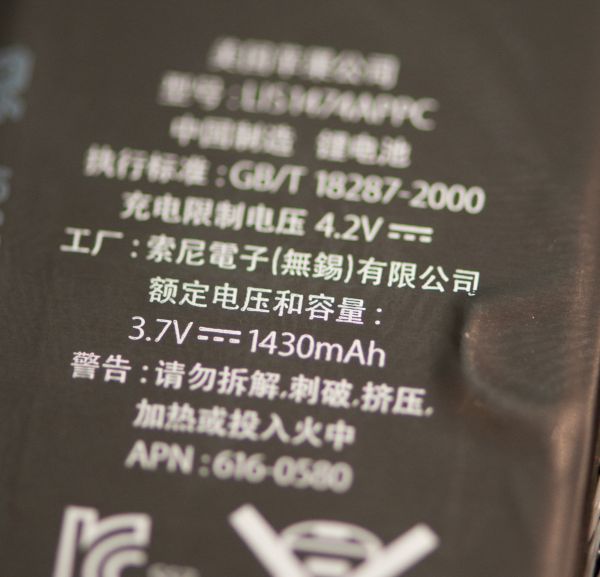
Battery capacity up to 1430 mAh
The other subtle change is an extremely small jump in battery capacity, from 1420 mAh in the 4 to 1430 mAh in the 4S. This is a very small change that boosts the capacity in watt-hours from 5.25 to 5.3. In addition the 4S puts on a little bit of weight, from 137 to 140 grams, but again nothing major.
Even the 4S packaging is basically the same as prior versions, including the same design and contents. Inside you get the phone, dock cable, headset mic, and the same smaller 5V, 1A charger that came with the 4.
| Physical Comparison | |||||||
| Apple iPhone 4 | Apple iPhone 4S | HTC Sensation | Samsung Galaxy Nexus | Samsung Galaxy S 2 | |||
| Height | 115.2 mm (4.5") | 115.2 mm (4.5") | 126.3 mm (4.97") | 135.5 mm | 125.3 mm (4.93") | ||
| Width | 58.6 mm (2.31") | 58.6 mm (2.31") | 65.5 mm (2.58") | 67.9 mm | 66.1 mm (2.60") | ||
| Depth | 9.3 mm ( 0.37") | 9.3 mm ( 0.37") | 11.6 mm (0.46") | 8.94 mm | 8.49 mm (0.33") | ||
| Weight | 137 g (4.8 oz) | 140 g (4.9 oz) | 148 g (5.22 oz) | 135 g | 115 g (4.06 oz) | ||
| CPU | Apple A4 @ ~800MHz Cortex A8 | Apple A5 @ ~800MHz Dual Core Cortex A9 | 1.2 GHz Dual Core Snapdragon MSM8260 | 1.2 GHz TI OMAP 4460 Dual Core Cortex A9 | 1.2 GHz Exynos 4210 Dual Core Cortex A9 | ||
| GPU | PowerVR SGX 535 | PowerVR SGX 543MP2 | Adreno 220 | PowerVR SGX 540 | ARM Mali-400 | ||
| RAM | 512MB LPDDR1-400 | 512MB LPDDR2-800 | 768 MB LPDDR2 | 1GB LPDDR2 | 1 GB LPDDR2 | ||
| NAND | 16GB or 32GB integrated | 16GB, 32GB or 64GB integrated | 4 GB NAND with 8 GB microSD Class 4 preinstalled | 16GB or 32GB NAND integrated | 16 GB NAND with up to 32 GB microSD | ||
| Camera | 5MP with LED Flash + Front Facing Camera | 8MP with LED Flash + Front Facing Camera | 8 MP AF/Dual LED flash, VGA front facing | 5 MP AF with LED flash, 1.3MP front facing | 8 MP AF/LED flash, 2 MP front facing | ||
| Screen | 3.5" 640 x 960 LED backlit LCD | 3.5" 640 x 960 LED backlit LCD | 4.3" 960 x 540 S-LCD | 4.65" 1280 x 720 Super AMOLED | 4.27" 800 x 480 SAMOLED+ | ||
| Battery | Integrated 5.254Whr | Integrated 5.291Whr | Removable 5.62 Whr | Removable 6.475 Whr | Removable 6.11 Whr | ||


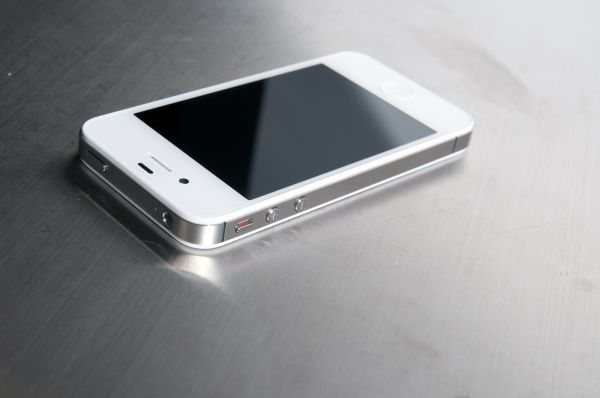

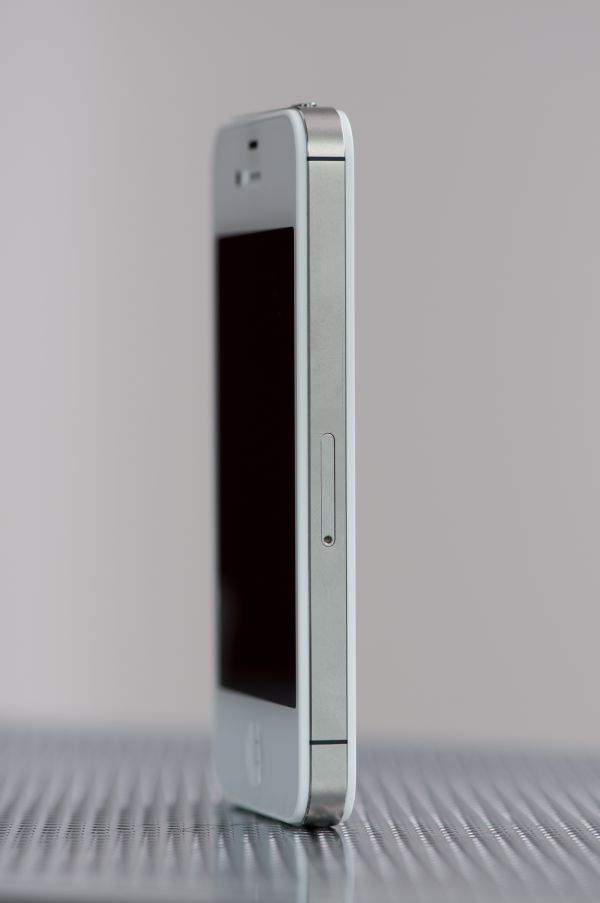














199 Comments
View All Comments
thunng8 - Thursday, November 3, 2011 - link
You do realize that the top 3 results are all vsync limited? They are all close to 60fps. That makes it not a great test to show the full potential of the gpu.ReverendDC - Friday, November 4, 2011 - link
I was wondering why there were no WPs in your comparison. They have comparable screens, functionality, and features.This is NOT to start a flame war. I am curious about how some of the newer WPs especially line up (Titan, Lumina 800, Focus S, etc).
Thanks!
mymomentummedia - Sunday, November 6, 2011 - link
Here is a 360 degreee review of the iPhone 4s with a beautiful girl in a swimsuit... no complaints here.http://www.youtube.com/watch?v=-eNxXBIV9_s
yeatzeck - Sunday, November 6, 2011 - link
According to the Chipworks (http://www.chipworks.com/en/technical-competitive-... in iPhone 4S is Sony's camera (they even X-ray it).You probably have to update the review.
mosmov - Monday, November 7, 2011 - link
You've run the Taiji for many devices so far.I'd like to see the number also for 4S to align the result with other devices in my memory.
tipoo - Monday, January 2, 2012 - link
Taiji is for Android...Conficio - Monday, November 7, 2011 - link
Here is the viral tip for Apple (or its competitors). Make it an option to deliver the text as well as the ability for the recipient to actually listen to the voice command recorded (sans the edit commands, etc.) That will become fast the fastest way to leave voice messages, because you don't have to wait for the phone to dial, time out and get through the voice mail instructions.
HelloChris - Monday, November 7, 2011 - link
Long time reader, but something in this review made me register a username so I could add to the comments...Anand's webpage-refreshing battery life test saw the iPhone 4S achieve around 10 and 11 hours, for 3G and WiFi, respectively. However, MANY new 4S owners (including myself) have been getting battery life which is roughly half of that. I just finished reading this whole review, and I have to wonder if the test unit sent to Anandtech might have been hand-picked by Apple? 10/11 hours is just so much more than everyone else seems to be getting. I've averaged 6.5 hours of total usage, and this includes several hours of use where I'm using absolutely no 3G/WiFi data, and minimal processing power (example: viewing a PDF, viewing pictures, reading items on my Google Reader feed)...
If you look on the major apple forums there are multiple threads where there are many users experiencing the same conditions.
Also, I'm aware of the battery issue with iOS 5 (which Apple acknowledged last week and has a beta update out already for) which implies that this is indeed a software, not a hardware issue.
Perhaps I'm missing something, but if it's the case that AnandTech received a well-performing test unit, that would explain their extraordinary battery life.
doobydoo - Friday, December 2, 2011 - link
I think you answer your own question.It sounds like your phone is affected by the battery life issue for which a software patch has been released, wheras Anand's probably wasn't.
The vast majority of iPhone 4S owners didn't experience any issues with battery life.
medi01 - Tuesday, November 8, 2011 - link
To care about "improved vibration" I have first to be somehow concerned with current "unimproved" vibration. Which I don't. And I don't know any person that is.